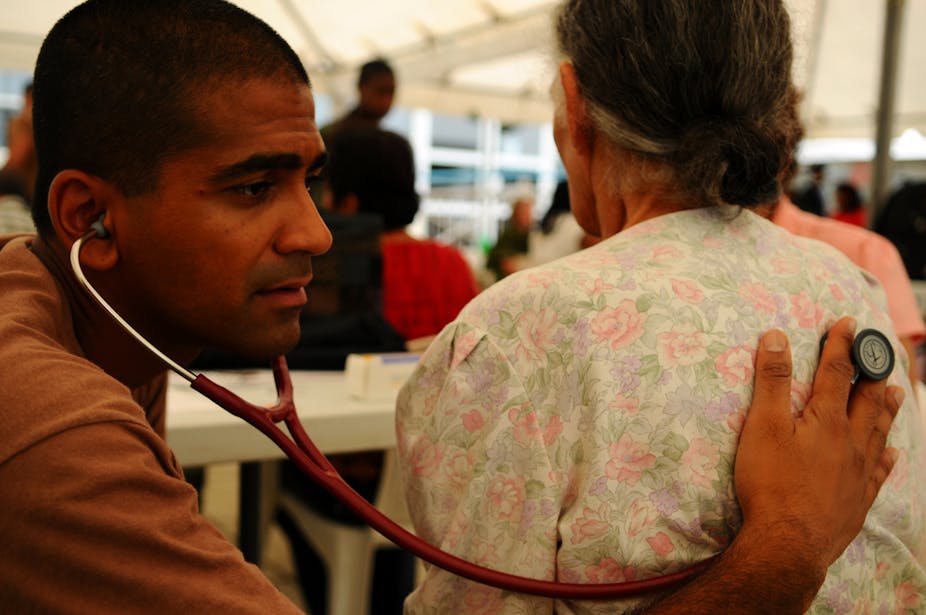For many people in the UK, tuberculosis is a disease that’s been out of sight, out of mind for a number of years. Although it is low and middle-income countries that bear the burden of TB-related sickness and death, among some groups, infections are on the rise in the West. Everywhere, however, TB is linked to poverty and marginalisation.
In developed, largely TB-free countries, it is ethnic minorities, the homeless, injecting drug users, prisoners and migrants who are particularly vulnerable to infection. Migrants from regions with high levels of TB – Africa, Asia and Latin America – are particularly at risk. The rate of TB infection amongst foreign-born migrants in North America, Europe and Australasia, can reach ten or twenty times that of non-migrants and make up 60% to 70% of recorded cases. Multiple drug resistant TB – the most difficult to treat – is also found disproportionately amongst migrants.
TB among migrants not only results from the reactivation of old, inactive infections acquired in their home country; rather many new infections occur in the host country. Even in wealthy countries, research has shown that the poor quality and cramped housing migrants often live in serves to provide the necessary conditions for TB transmission. However acquired, transmission outside of close-knit migrant communities or immediate families is rare.
Dealing with TB’s re-emergence in industrialised countries, where the disease is comparatively rare, represents a challenge to health systems for several reasons.
Detection difficulties
From a purely medical perspective, TB can be difficult to detect, particularly for physicians who have little experience of the disease. An infection that’s not yet showing symptoms may be undetectable by chest X-ray and the skin tests that are often used can produce false-negatives and false-positives.
Due to the complex and varied nature of its symptoms, even when signs are present, TB is still easily misdiagnosed. And, once a case has been identified, screening individuals who have been in contact with TB is also difficult: identifying and tracing them is time-consuming and diagnosis requires at least two visits to a health centre. Thus, diagnosing TB in anyone, let alone migrant populations, is a challenge.
A variety of non-medical factors also contribute to delayed TB diagnosis. TB’s symptoms are diverse – cough, fever, night sweats, weight loss – and often mild. This alone tends to lead to delays in seeking help. Fear of immigration authorities, concerns about costs and unemployment deter migrants from seeking a diagnosis. Once at a clinic or hospital they also face challenges that stem from language difficulties and a lack of familiarity with the structure of the health system.
Ignorance is bliss?
A potential diagnosis itself also holds fears. For some migrants, based on what they learnt in their home countries, TB is seen as incurable and deadly. But this is not the case. It is curable with a relatively cheap drug regimen. Spreading this fact is important, though doesn’t mean all migrants will be open to it.
Successful treatment requires a patient following a six-month long course of antibiotics. Adherence to these kind of programmes can be low, for example, as a result of migrants’ long working hours, economic precariousness and unsympathetic employers.
And there will be migrants who won’t want to risk unnecessary contact with immigration officials. These concerns complicate tracing those who have been in contact with TB and screening for infections in people who might be carrying the disease, but are not yet showing symptoms.
Positive interactions with health professionals – initially and during the months of follow up that treatment requires – are however a key route to seeing migrants adhere to the long treatment programme. Cultural understanding and migrants’ trust in health staff, whether of the same background or not, is also important.
TB often has devastating economic and social consequences, particularly for migrants. The costs associated with the disease, the physical weakness and unemployment have serious repercussions for a patient’s economic situation, social support and mental health. Encouraging treatment is therefore vitally important.
Misconceptions about TB as an incurable disease and confusion about how it is transmitted can also lead to stigma and compound migrants’ marginalisation within their own and the wider community. Not only does this put other individuals at risk of TB but it means that those are affected are more likely to risk suffering in silence.
Migrants are not a homogenous group. But for those from regions with high levels of TB, often because of their economic precariousness, poor living conditions and social marginalisation in rich host countries, they are particularly vulnerable to the disease. Beyond escalating TB monitoring in migrant populations, to better control the disease it is crucial to understand their perceptions of TB and the specific obstacles that they face when seeking a diagnosis and adhering to a treatment programme.

